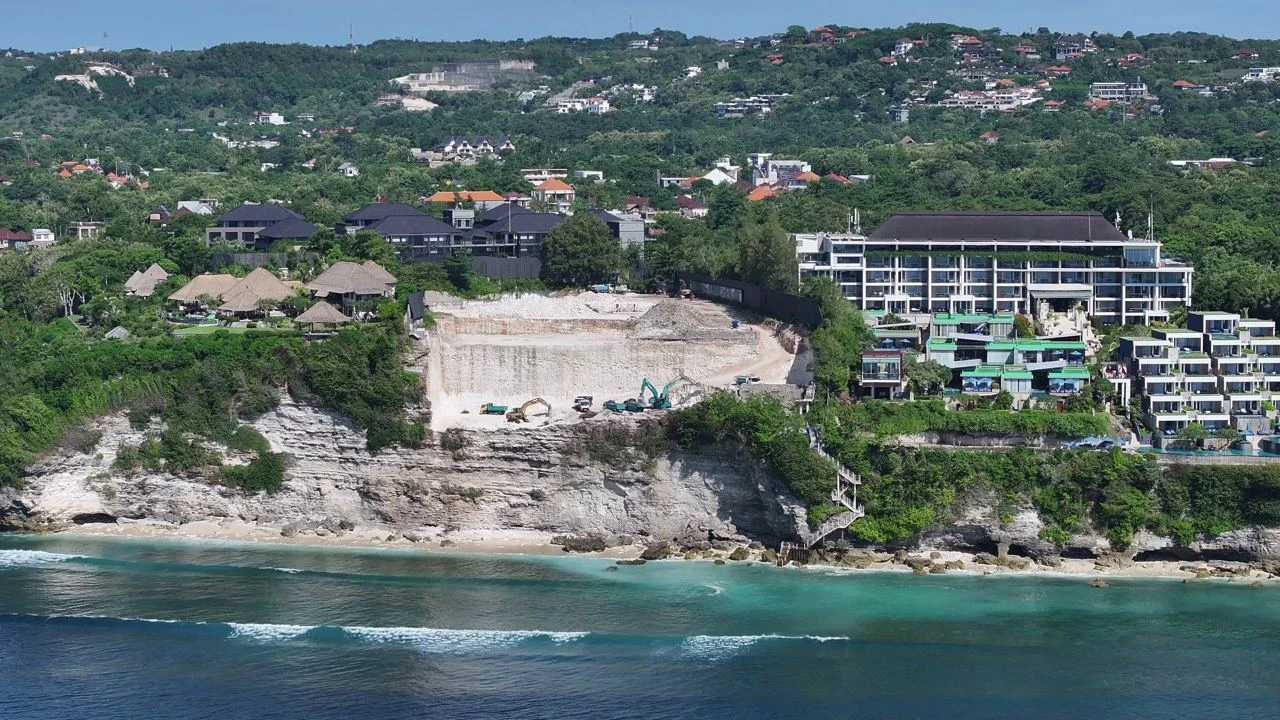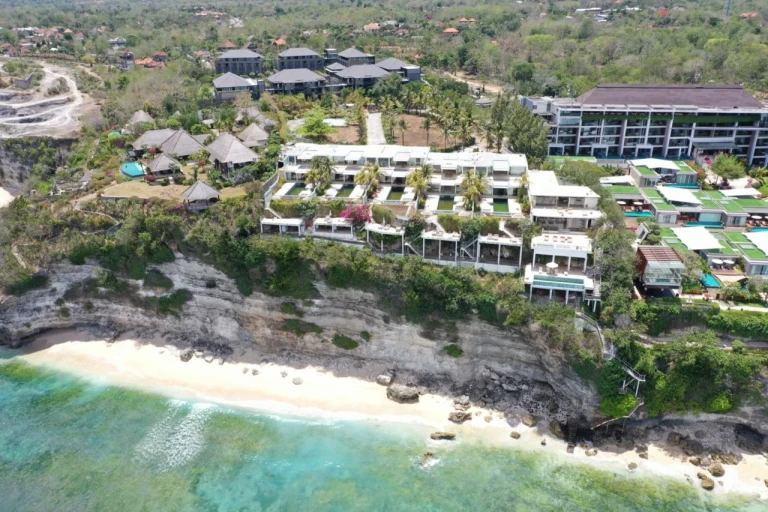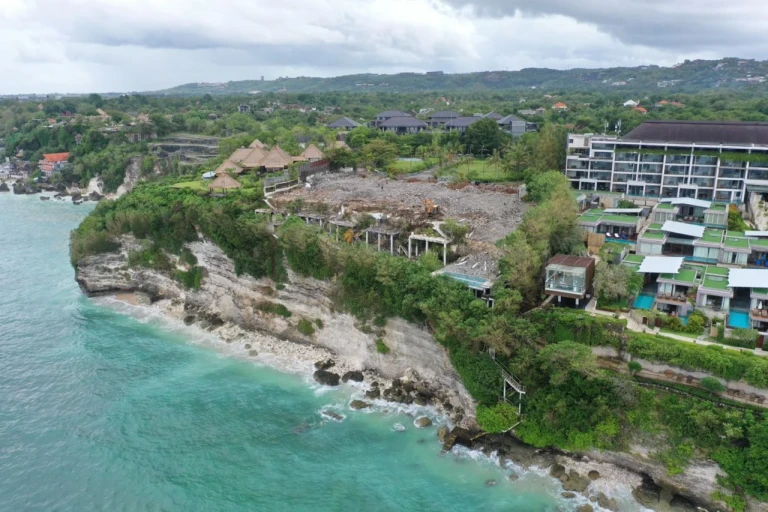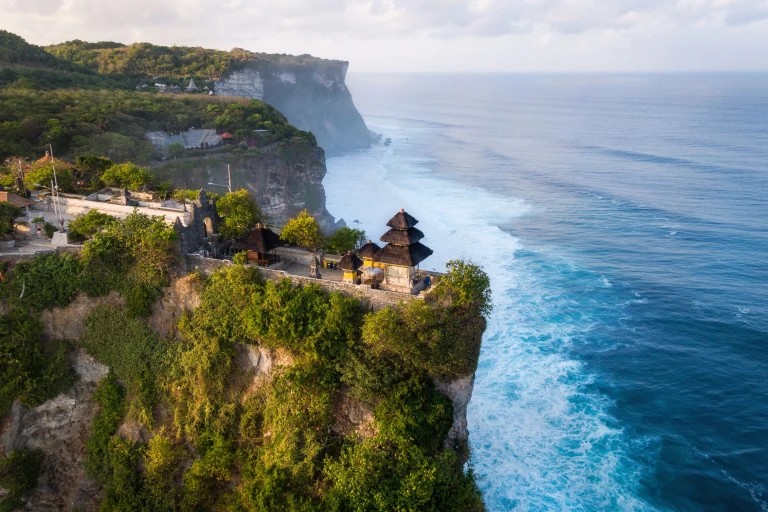After the much-publicized cliff collapse at Bingin Beach, which we recently covered, more details have emerged from firsthand accounts. These were shared by the company responsible for the resort's construction, Mirah Development Group.

A company representative, Denis, explained the processes of certification, purchasing, and construction. Balinese authorities also confirm that the company was not at fault for the collapse.
Denis: Many were interested in whether there was even a permit for this project and if such work could be conducted on this site. None of our projects start without prior document preparation. No work begins on the site without the necessary permits. This project, called Amali Luxury Residence, is a complex of 119 apartments. We have the PKKPR, the PBG construction permit, and a license to work with the cliff. We have obtained the environmental license and several other necessary documents. The licensing and preparation process alone took more than eight months.
In addition to the official documents, we communicated with our neighbors on the cliff, including hotels that are also built on this cliff, such as the Anantara Hotel. Over six months, we obtained consent from neighboring settlements, coordinated the process to not disrupt their routine, and arranged transport routes for trucks, among other things. We did significant groundwork. Therefore, everyone, at least the local population, was aware of the construction.
Why did the collapse occur? There was information suggesting that the cause was not erosion but the actions of the developer. This is both true and false. When we acquired this site, it contained an abandoned hotel named C-151. This hotel had villas located right on the edge of the cliff, which can be seen in photos, and several villas beyond the cliff's edge. In our opinion, the hotel itself was constructed with violations since the villas extended beyond the cliff's edge. This created an increased load on the rock, which was already steep and, in some places, had a negative angle. We had to rectify the mistakes of the previous owners. We tried to do this carefully. In dangerous areas, we used manual demolition. Imagine dismantling several villas by hand without using jackhammers or heavy machinery. It’s quite challenging. We did it anyway, and by the time of the collapse, only the foundations of these villas remained.
It turns out that the key factor was that these villas, built without additional cliff reinforcement, placed extra stress on the rock. Of course, our work also added stress when we carried out the demolition. We needed to make a road for trucks to remove excess material. This combination of factors played a role. The primary reason was the demolition of the villas initially built with violations, making the cliff edge softer in that area. Some experts also suggest that an earthquake on May 15 could have triggered these processes. Consequently, the collapse occurred. It appears quite extensive, but in reality, only a part—about one meter, plus or minus—collapsed, with slightly more in some areas from the cliff edge. This was the part where the foundations and piles of the old villas were secured beyond the permissible limits of the cliff. Since the surface area is large, it creates the impression that a lot of rocks fell. Additionally, rocks stored at the top for removal also fell, adding to the perception of a massive collapse.


In the photo - the process of demolishing the old villa.
After the collapse, inspections were conducted by several agencies. We are still in communication with each of the regulatory bodies. All documents have been provided to them, and the regulator has no complaints against us. The documents have been verified and it has been established that they precisely match the nature of the work being carried out. Therefore, there are no questions for us, and there are no issues with the complex itself. Moreover, all these licenses and agreements impose obligations on us, including environmental preservation. We are now required to clear the beach of the collapse debris, and we will do this within 28 days. We are already preparing for these works and will document everything.
In addition to clearing the rocks that fell onto the beach from our site during the incident, we will try to remove the rocks that fell onto the beach during the construction of Anantara. During those works, at least two very large rocks ended up on the shore. We will also attempt to remove these rocks.
In summary, I want to say that the cause of the collapse is not due to us irresponsibly expanding the view or engaging in questionable activities. Instead, it is because we were trying to correct mistakes made during the construction of the previous hotel.
Denis provided the documents to the editorial team. His statements are corroborated by several official communications regarding the incident. For instance, Badung Regent I Nyoman Giri Prasta reported that, based on the conducted investigation, all activities and operations on the sites were carried out in accordance with applicable legal provisions from a licensing perspective. The land, for which licenses were issued, also holds an SHM (certificate of ownership).
In an official statement, Mirah Development Group confirmed that they would address the damage at Pemuti Pecatu Beach and restore the shoreline to its usual state. This beach is located between Bingin and Impossible beaches, which are popular beach destinations in Uluwatu.
Mirah Development Group's statement reads: "We intend to learn from this event and analyze our actions that allowed this to happen."

You can add one right now!